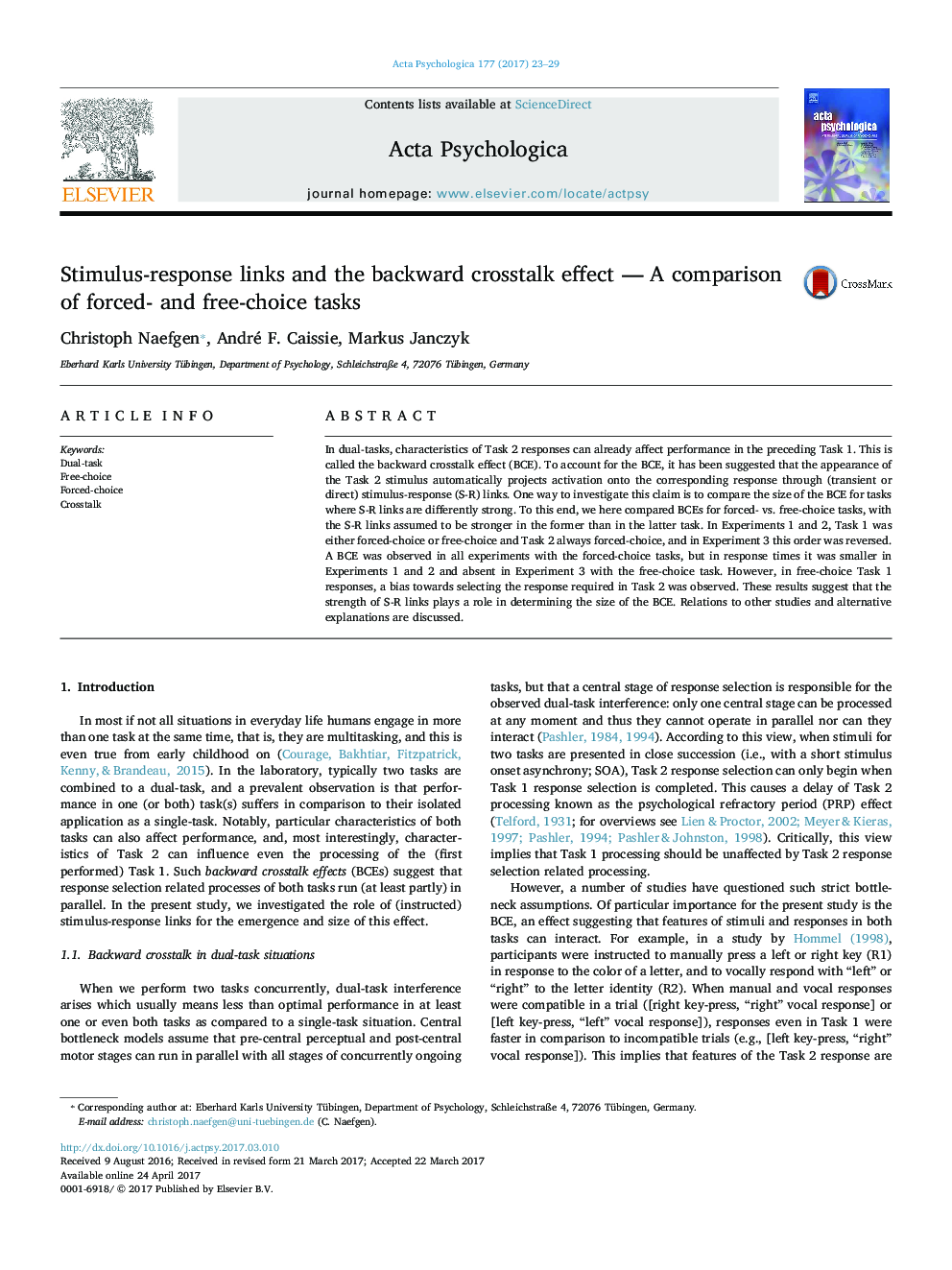| کد مقاله | کد نشریه | سال انتشار | مقاله انگلیسی | نسخه تمام متن |
|---|---|---|---|---|
| 5040268 | 1473581 | 2017 | 7 صفحه PDF | دانلود رایگان |
- Compatibility of responses can facilitate Task 1 responses in dual-tasking.
- This finding is called the backward crosstalk effect.
- The backward crosstalk effect is smaller in free-choice than in free-choice tasks.
- Stimulus-response links play an important role for the backward crosstalk effect.
In dual-tasks, characteristics of Task 2 responses can already affect performance in the preceding Task 1. This is called the backward crosstalk effect (BCE). To account for the BCE, it has been suggested that the appearance of the Task 2 stimulus automatically projects activation onto the corresponding response through (transient or direct) stimulus-response (S-R) links. One way to investigate this claim is to compare the size of the BCE for tasks where S-R links are differently strong. To this end, we here compared BCEs for forced- vs. free-choice tasks, with the S-R links assumed to be stronger in the former than in the latter task. In Experiments 1 and 2, Task 1 was either forced-choice or free-choice and Task 2 always forced-choice, and in Experiment 3 this order was reversed. A BCE was observed in all experiments with the forced-choice tasks, but in response times it was smaller in Experiments 1 and 2 and absent in Experiment 3 with the free-choice task. However, in free-choice Task 1 responses, a bias towards selecting the response required in Task 2 was observed. These results suggest that the strength of S-R links plays a role in determining the size of the BCE. Relations to other studies and alternative explanations are discussed.
Journal: Acta Psychologica - Volume 177, June 2017, Pages 23-29
